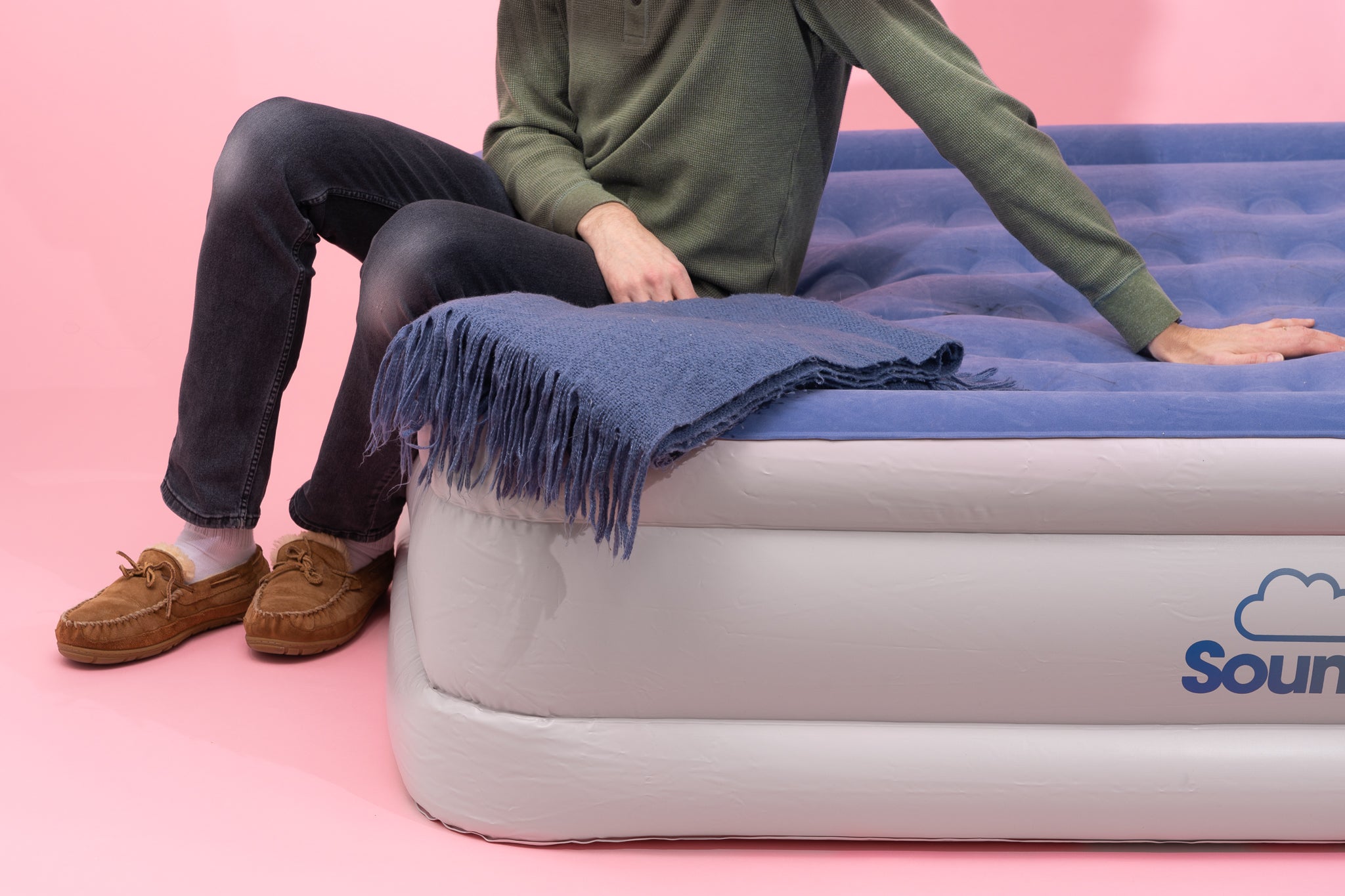Air mattresses are popular for their convenience and versatility, serving as comfortable sleeping surfaces for guests, campers, and even as temporary beds in homes. However, despite their benefits, air mattresses can sometimes deflate unexpectedly, causing inconvenience and discomfort. Understanding the common causes of deflation can help users maintain their mattresses better and prolong their lifespan.
Normal Air Loss Over Time
One of the primary reasons air mattresses deflate is due to normal air loss over time. Unlike traditional mattresses, which typically maintain their firmness for extended periods, air mattresses can slowly lose air even without any punctures or leaks. This gradual deflation occurs naturally as the materials stretch and the air molecules permeate through the mattress’s seams and valves. Factors such as temperature fluctuations and the frequency of use can accelerate this process. Therefore, periodic reinflation is necessary to maintain optimal firmness.

Temperature Fluctuations
Temperature changes can significantly impact the firmness of an air mattress. As temperatures fluctuate, the air inside the mattress expands or contracts. Cold temperatures, for example, can cause the air inside the mattress to condense, leading to a perceived loss of firmness. On the other hand, exposure to direct sunlight or warm indoor temperatures can cause the air inside the mattress to expand, potentially overinflating it temporarily. To mitigate the effects of temperature, it’s advisable to inflate or deflate the mattress slightly depending on the ambient conditions.
Improper Inflation Techniques
Improper inflation techniques can also contribute to air mattress deflation. Over-inflation, where the mattress is filled beyond its recommended capacity, can strain the seams and valves, leading to leaks over time. Under-inflation, on the other hand, can result in uneven pressure distribution and premature sagging. Following the manufacturer’s guidelines regarding inflation levels and using compatible pumps or inflation devices can help maintain the mattress’s integrity and prevent unnecessary deflation issues.

Valve and Seal Issues
The valve and seal of an air mattress play a crucial role in maintaining its inflation level. If the valve is not securely closed after inflation or if the seal is compromised, air can escape gradually, causing the mattress to deflate. Inspecting the valve and seal regularly for signs of wear, debris, or damage is essential. Cleaning the valve area and ensuring a tight seal after each use can help prevent air leakage and maintain consistent firmness throughout the mattress.
External Puncture or Tear
Perhaps the most obvious cause of air mattress deflation is a puncture or tear in the mattress material. Sharp objects, pets’ claws, or even rough surfaces can puncture the mattress, causing air to leak out rapidly. Identifying and repairing punctures promptly is crucial to prevent further deflation and extend the mattress’s lifespan. Most air mattresses come with repair kits that include patches and adhesive for quick fixes. Additionally, using protective mattress covers or placing the mattress on a smooth surface can reduce the risk of punctures.

Aging and Wear
Like any other product, air mattresses can deteriorate over time due to aging and wear. The materials used in the mattress, such as PVC or vinyl, can become brittle or weakened with prolonged use and exposure to environmental factors like sunlight or humidity. As the materials degrade, the seams and valves may become less effective in retaining air, leading to gradual deflation. Regularly inspecting the mattress for signs of wear and considering replacement if significant deterioration is observed can help prevent unexpected deflation issues.
Weight and Usage Patterns
The weight and usage patterns of individuals using the air mattress can also influence its firmness and susceptibility to deflation. Heavier individuals or frequent use by multiple people can exert more pressure on the mattress, potentially causing it to lose air faster than anticipated. Additionally, sudden movements or jumping on the mattress can strain the seams and valves, increasing the likelihood of air leakage over time. Educating users about proper handling and weight limitations, if any, can help minimize these factors and prolong the mattress’s lifespan.

Storage Conditions
Proper storage is essential for maintaining the structural integrity of an air mattress. Storing the mattress in humid or excessively hot environments can accelerate material degradation and weaken the seams and valves. Ideally, the mattress should be stored in a cool, dry place when not in use, preferably in its original packaging or a protective cover. Ensuring the mattress is clean and dry before storage can also prevent mold or mildew growth, which can compromise the mattress’s performance and contribute to unexpected deflation.
Manufacturer Quality and Design
Lastly, the quality and design of the air mattress itself can influence its susceptibility to deflation. Higher-quality mattresses with reinforced seams, durable materials, and reliable valves are less likely to experience premature deflation compared to cheaper alternatives. Researching reputable brands known for their durable inflatable products and reading customer reviews can provide insights into the longevity and performance of different models. Investing in a well-reviewed and well-designed air mattress can ultimately save money and frustration associated with frequent deflation issues.
Normal Air Loss Over Time
Air mattresses, especially those made of materials like PVC or vinyl, naturally allow air to escape slowly over time. This process is influenced by the elasticity of the material and the frequency of use. To counteract this, it’s recommended to top off the mattress with air periodically, especially before each use.

Temperature Fluctuations
Temperature changes can have a noticeable impact on air mattresses. When temperatures drop, the air inside contracts, causing the mattress to lose firmness. Conversely, heat can cause the air to expand, potentially overinflating the mattress temporarily. Adjusting the air pressure accordingly based on the ambient temperature can help maintain consistent comfort levels.
Conclusion
In conclusion, understanding the common causes of air mattress deflation is crucial for maintaining optimal comfort and longevity. By addressing factors such as normal air loss, temperature fluctuations, proper inflation techniques, valve maintenance, puncture prevention, aging, weight considerations, storage conditions, and product quality, users can mitigate the risk of unexpected deflation. Regular inspection, maintenance, and proactive measures such as using protective covers or repair kits can help extend the lifespan of an air mattress, ensuring it remains a reliable sleeping solution for years to come.









